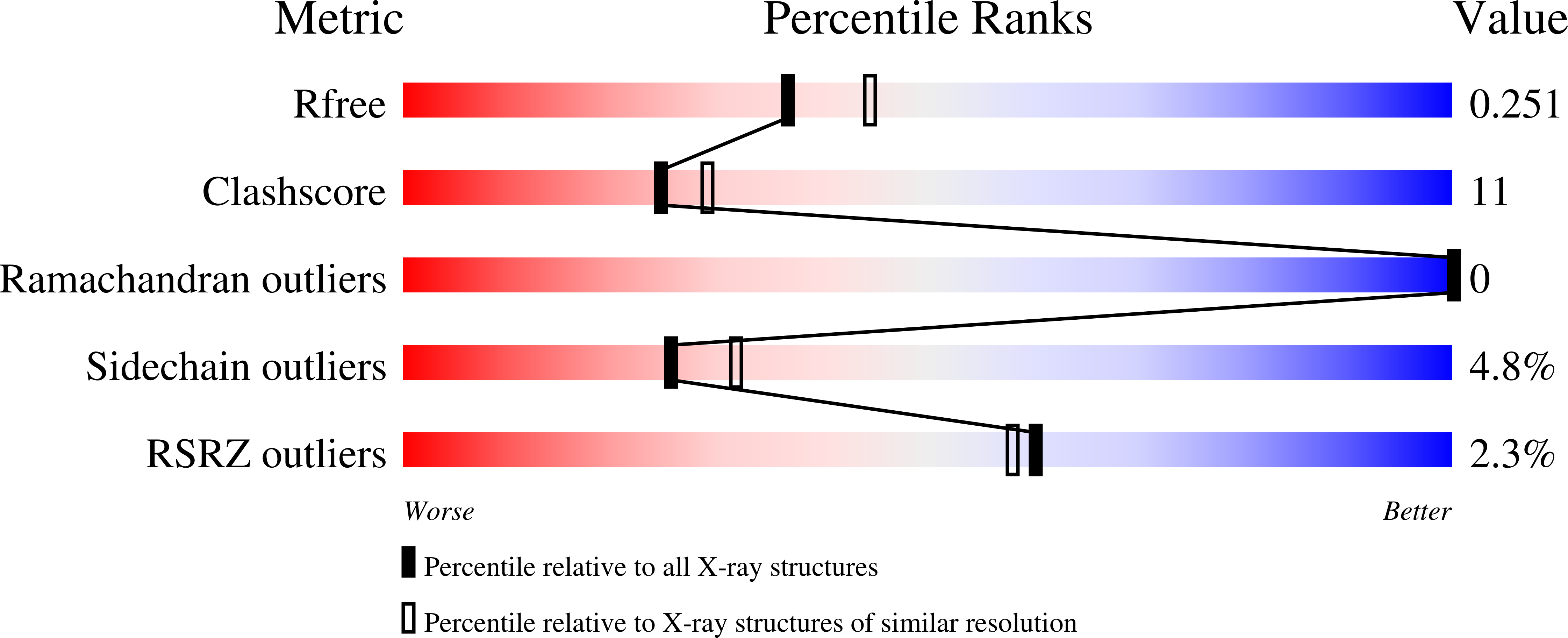NADPH is an allosteric regulator of HSCARG
Dai, X., Li, Y., Meng, G., Yao, S., Zhao, Y., Yu, Q., Zhang, J., Luo, M., Zheng, X.(2009) J Mol Biol 387: 1277-1285
- PubMed: 19254724
- DOI: https://doi.org/10.1016/j.jmb.2009.02.049
- Primary Citation of Related Structures:
3DXF, 3E5M - PubMed Abstract:
NADP(H) is an important cofactor that controls many fundamental cellular processes. We have determined the crystal structure of HSCARG, a novel NADPH sensor, and found that it forms an asymmetrical dimer with only one subunit occupied by an NADPH molecule, and the two subunits have dramatically different conformations. To study the role of NADPH in affecting the structure and function of HSCARG, here, we constructed a series of HSCARG mutants to abolish NADPH binding ability. Protein structures of two mutants, R37A and Y81A, were solved by X-ray crystallography. The dimerization of wild-type and mutant HSCARG was studied by dynamic light scattering. Differences between the function of wild-type and mutant HSCARG were also compared. Our results show that binding of NADPH is necessary for HSCARG to form a stable asymmetric dimer. The conformation of the monomeric mutants was similar to that of NADPH-bound Molecule I in wild-type HSCARG, although some conformational changes were found in the NADPH binding site. Furthermore, we also noticed that abolition of NADPH binding ability changes the distribution of HSCARG in the cell and that these mutants without NADPH are more strongly associated with argininosuccinate synthetase as compared with wild-type HSCARG. These data suggest that NADPH functions as an allosteric regulator of the structure and function of HSCARG. In response to the changes in the NADPH/NADP(+) ratio within cells, HSCARG, as a redox sensor, associates and dissociates with NADPH to form a new dynamic equilibrium. This equilibrium, in turn, will tip the dimerization balance of the protein molecule and consequently controls the regulatory function of HSCARG.
Organizational Affiliation:
National Laboratory of Protein Engineering and Plant Genetic Engineering, College of Life Sciences, Peking University, Beijing 100871, China.














